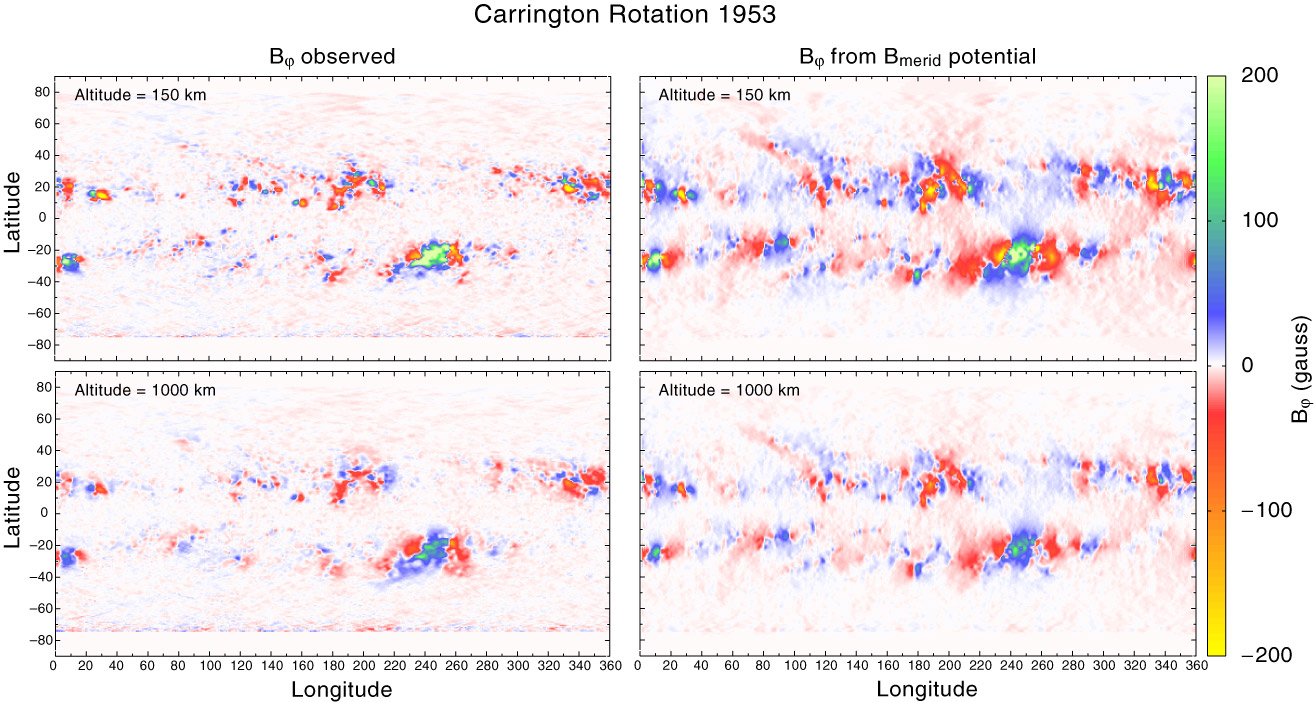
The methods described by Ulrich et al 2002 permit the measurement of the slowly varying part of the transverse or East-West component of the magnetic field. The resolution of the field also provides the component in the meridional plane. This latter is the field commonly studied as part of the solar magnetic cycle of activity. In a non-conducting medium or a very low density plasma, the field should not have significant electric currents and should be describable in terms of a potential field model Altschuler and Newkirk (1969SoPh....9..131A). After matching the potential field to the observed meridional field, it is then possible to calculate the resulting East-West field. The result is shown below.

Comparison of the top two figures shows that the potential field result has much larger transverse components than is observed. Evidently, the currents in the deep photosphere confine the magnetized flux tubes to a narrow and vertical configuration. At the base of the chromosphere, this confinement is less strict and the actual field can diverge as is required by the potential field model. In this case the observed transverse field is larger than was the case in the lower photosphere and the potential field model yields a smaller transverse field than was the case in the lower photosphere. The combination produces a result in which the potential field model is much more successful in the low chromosphere as compared to the result in the low photosphere.
The calculations of the potential field and its comparison to the observed transverse field has been done by Tran Tham as part of his PhD research.